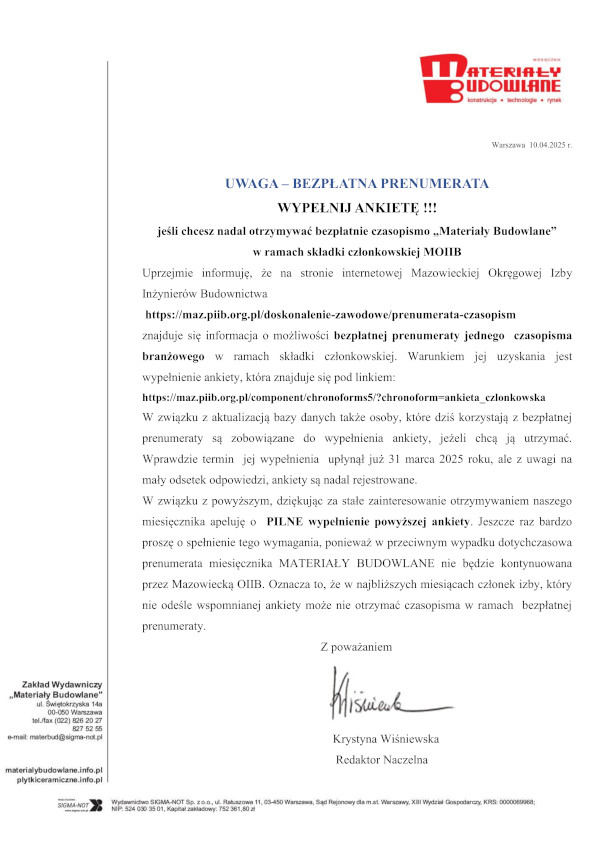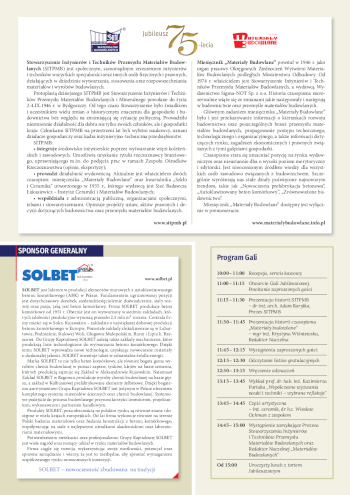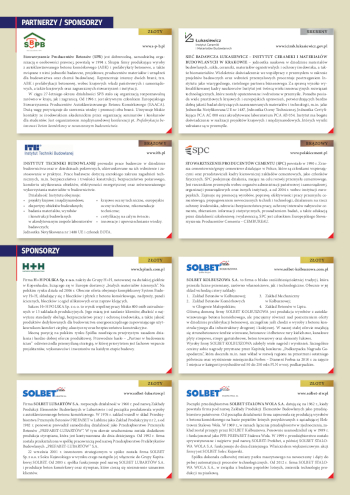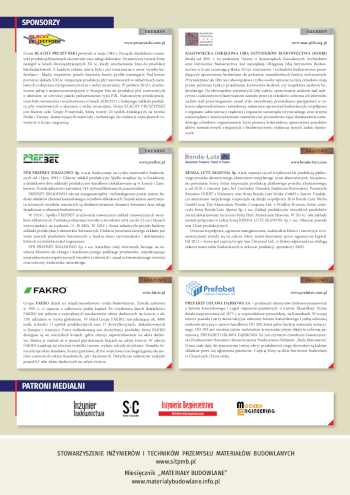mgr inż. Rafał Nowak
prof. dr hab. inż. Romuald Orłowicz
W istniejących budynkach murowych dość często występują uszkodzenia ceglanych nadproży łukowych w postaci spękań lub wypadania cegieł. Spękania są skutkiem przeciążenia, nierównomiernego osiadania podłoża, oddziaływań dynamicznych itp. Wypadanie cegieł z łuków może być skutkiem powstania nadmiernych naprężeń rozciągających, zwietrzenia zaprawy lub oddziaływań dynamicznych, np. ruchu pojazdów. W efekcie, łuk ceglany praktycznie jest wyłączony z pracy, a rolę nadproża spełnia mur nad łukiem.
W celu rozpoznania mechanizmu zniszczenia nadproży łukowych przeprowadzono badania na modelach wykonanych z cegły pełnej ceramicznej o średniej wytrzymałości na ściskanie 107,6 MPa na zaprawie o średniej wytrzymałości na ściskanie 8,0 MPa. Wytrzymałość muru na ściskanie określona na standardowych próbkach o wymiarach 50 x 50 x 12 cm wynosiła 26,8 MPa.
***
Procedures and results of fundamental research brick arched lintels
Two models of brick arched lintels and two arch models were put to the test of single concentrated force in the middle of the span and in the most sensitive spot. Value of the concentrated force, value of the horizontal force and the displacement were registered. The dependence of the construction strength (in comparison with the strength of the arched lintel to the strength of the arch) were compared to the placement of concentrated force. Analytical numerical research where carried out with help of limit tension stress criterion, then results where compared to the results of fundamental research.
Materiały Budowlane 3/2013, strona 94-95 (spis treści >>)






























